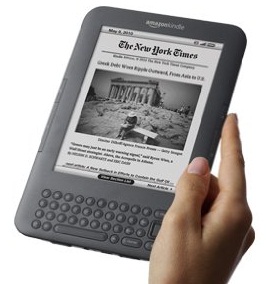 James Gardner‘s Little Innovation Book is a great read for anyone who has an interesting in getting their team, department or organisation doing things differently. Not only is it short, and very practical, it’s also cheap – you can read it online for free, or buy an ebook version for a few quid.
James Gardner‘s Little Innovation Book is a great read for anyone who has an interesting in getting their team, department or organisation doing things differently. Not only is it short, and very practical, it’s also cheap – you can read it online for free, or buy an ebook version for a few quid.
Innovation seems almost a dirty word at times. I lose count of the number of times I see people putting on their lists of words they cannot bear. I don’t understand why this is; maybe because most people and organisations are so bad at it? I should think that would mean we ought to be talking about it more, in that case!
It strikes me that we need good innovation now, in government, more than ever. After all, what with the budget cuts, things are going to have to change one way or another. The two ideas that seem to be emerging from local government are shared services and outsourcing. I’m sure we can do better than that?
Anyhow, James’ book is made up of 10 rules for innovating. Am sure he won’t mind me reproducing them here, with a quick description of each. If you want more (including some great case studies), you’ll have to read the book.
- Create an Innovation Strategy First – decide what your innovation aim is and how you can best get there: do nothing, play to win, or play not to lose
- Define What Innovation Means – “one has to have an understanding of what will be acceptable as outputs from innovators before one starts to be innovative”
- Make Sure the Role of Innovators is Clear – are those with responsibility for innovation actually involved in innovating, or in promoting a culture of innovation?
- Have a Connection to the Money – innovators must ensure they get some budget, although not too much – but have to justify it to the bean counters
- Address the 3 Big Myths – which are that 1) ideas are the most important thing; 2) innovation is all about big hits; and 3) innovation is risky, unpredictable and a luxury
- Manage the Technologists – “The key to co-operation is to find a trigger point which allows Information Technology to contribute within the boundaries of their prioritization framework without alienating them altogether”.
- Answer the 3 Key Questions – which are: ‘Can we do this?’, ‘Should we do this?’ and ‘When?’.
- Drown the Puppy – to keep returns on innovation projects high, get used to killing the ones which probably won’t work out.
- Share Everything – “innovators who talk about their work, share their knowledge, and network widely seem to be much more successful than those who don’t”.
- Manage the People – have you got the right group of people in the team to work on the innovation project and make it work?


